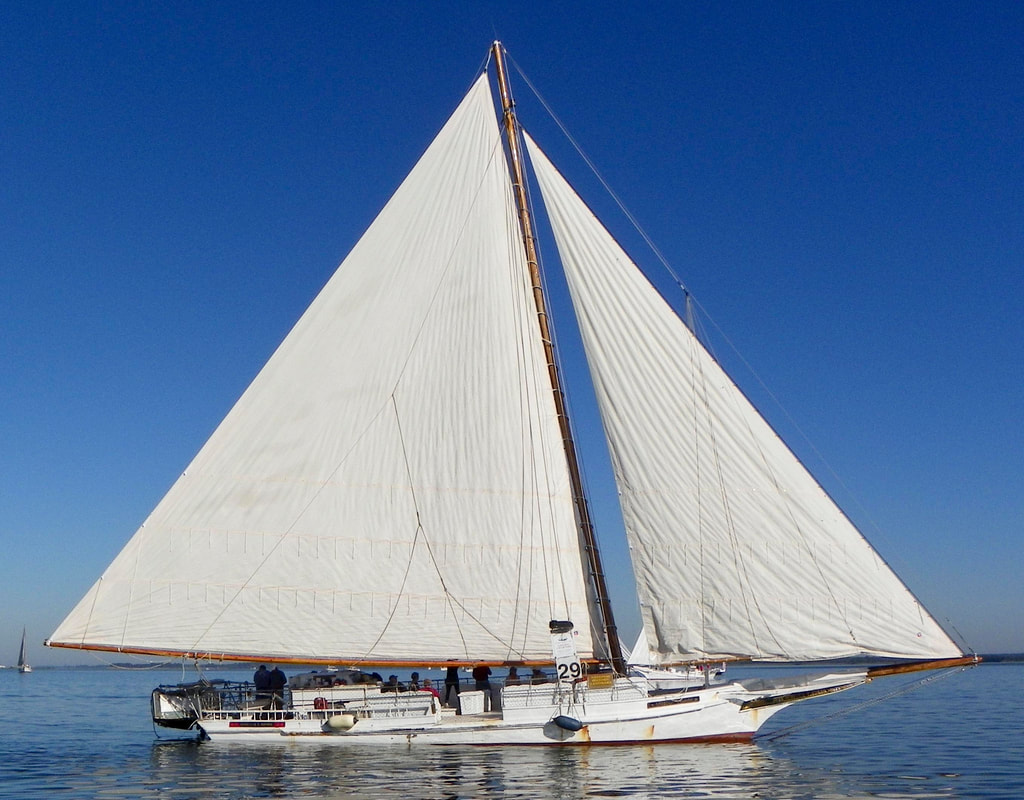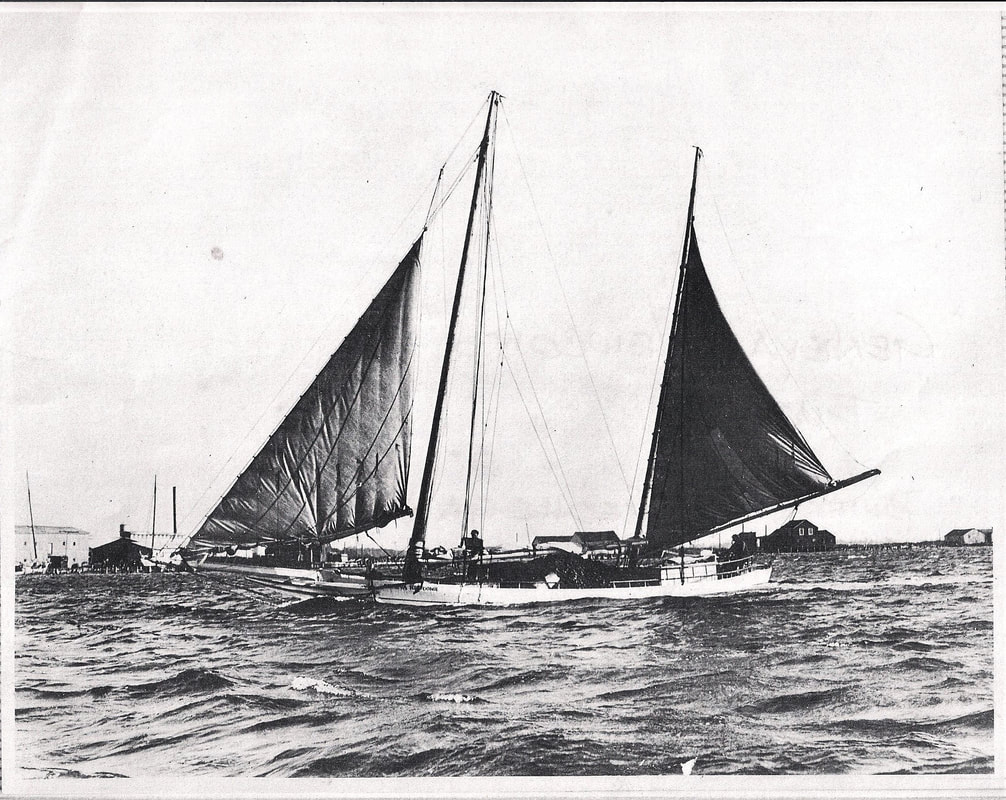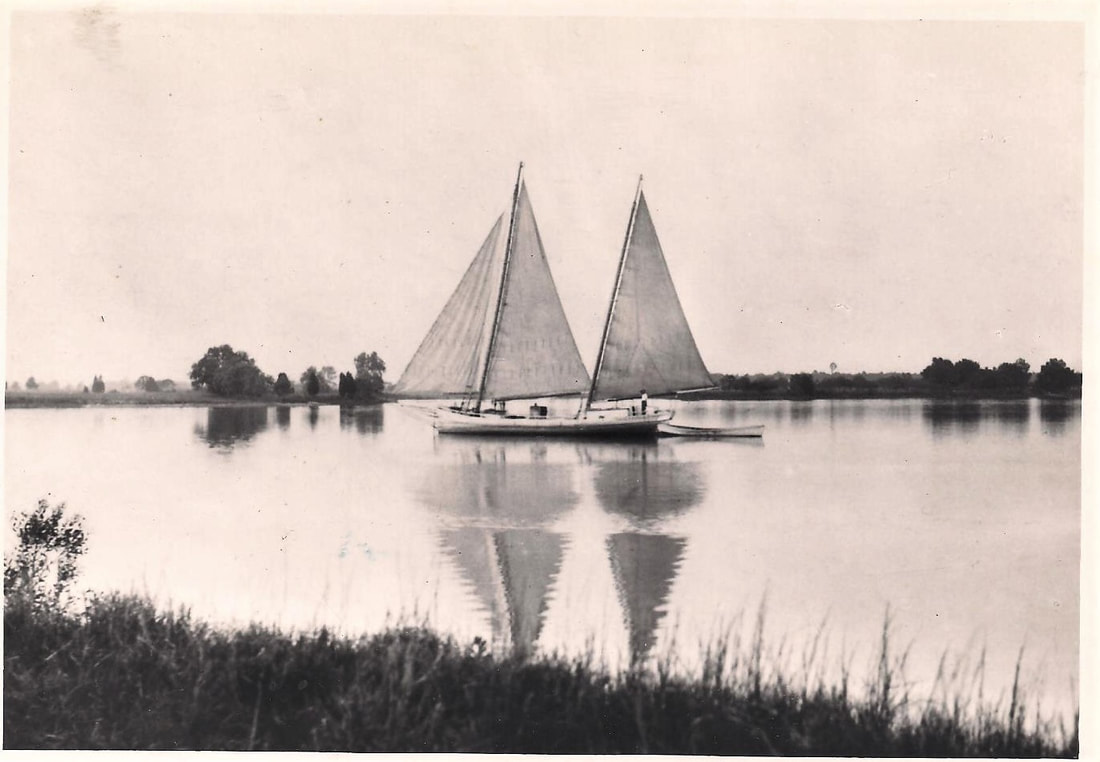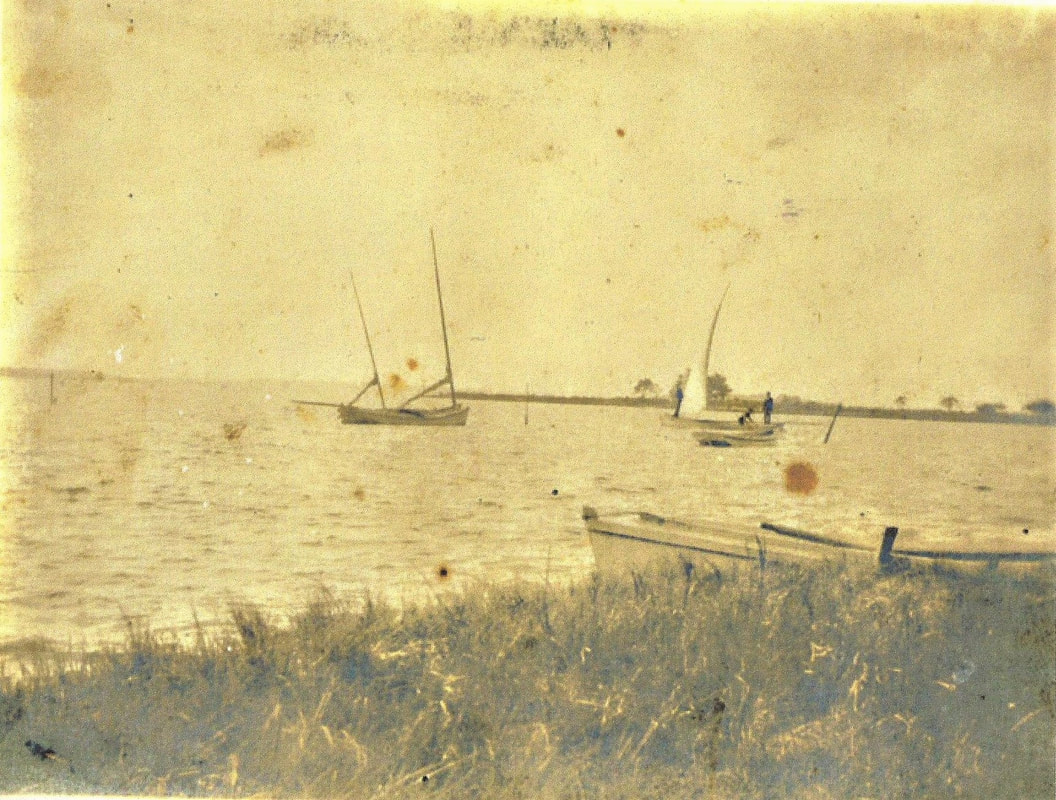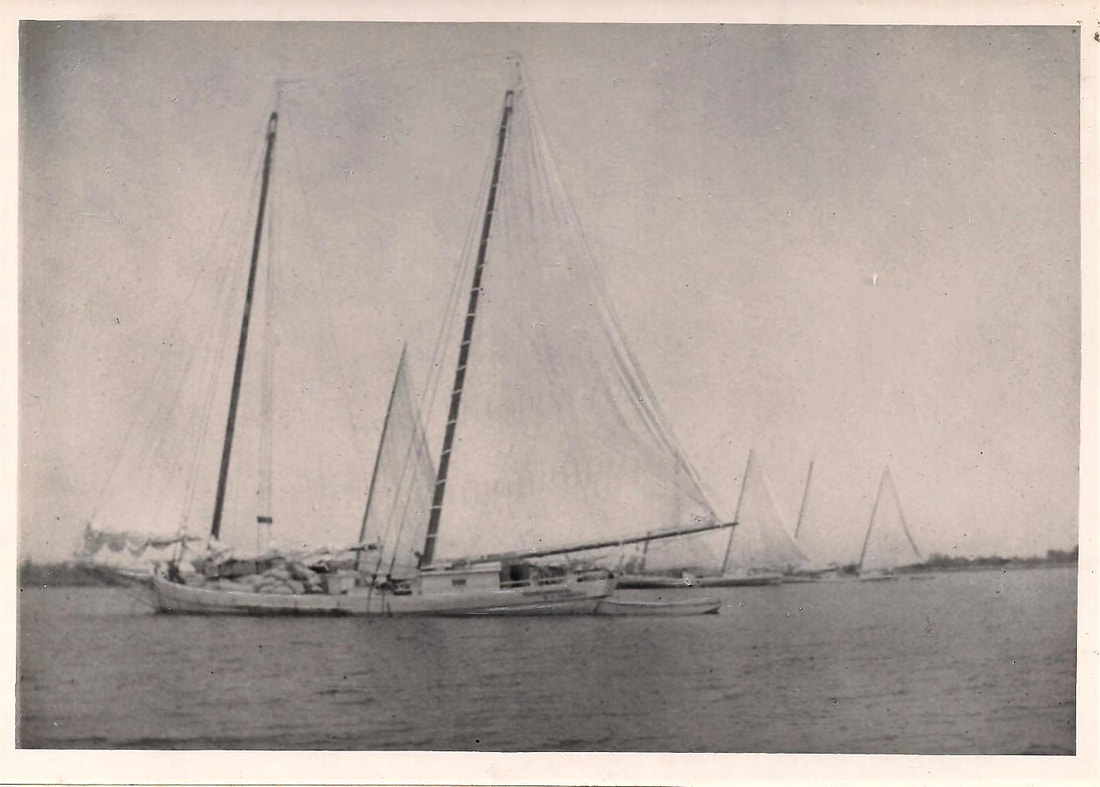Island shipyards built pungies, schooners, bugeyes, and sloops for oyster dredging. This and the lumber industry almost decimated the trees on the island.
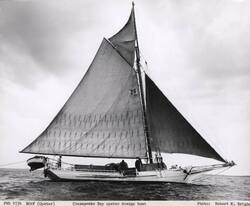
The oyster dredging sloop "J.T. Leonard" (above) was built by Moses Geohegan on Taylors island in 1882. In 1966, due to her historical significance, she went to the Chesapeake Bay Maritime Museum in St. Michaels and was put on exhibit. The J.T. Leonard sank and was cut up in 1974 after having deteriorated. Everything salvageable was used to create a museum exhibit. The vessel's plight convinced the museum to create infrastructure to maintain its floating exhibits.
The Rebecca Ruark (pictured immediately above) was built on Taylors Island in 1886 only three years after the first documented Skipjack was built. She is the oldest surviving Skipjack and now sails out of Tilghman Island, Maryland. Moses Geohegan built the boat on Taylor's Island, for William T. Ruark, who named her after his wife, Rebecca Travers Ruark. According to the Last Skipjacks Project (http://lastskipjacks.com/boats/rebeccatruark.html) the boat had—and to many still has—the reputation of being the fastest boat in the fleet, and she also was considered the best dredger. Emerson Todd said, "It can go anywhere on the Chesapeake Bay—in rain or shine or heavy fog. It's the best."
- Photo from the website of The Last Skipjacks Project.
- Photo from the website of The Last Skipjacks Project.
Above is the bugeye "Geneva Newcomb" built by Geohegan at Taylors Island c.1900 (courtesy of Lee Newcomb).
Above photo is the bugeye Lottie M. Leach c. 1903 sailing between James Island and Taylors Island. According to the 1941 book Chesapeake Bugeyes by M.V. Brewington the Lottie M. Leach was built in 1896 at Solomons by M.M. Davis (info and photo courtesy of Lee Newcomb).
Above - "Sharpies" in Scott's Cove James Island. Date and names unknown (info and photo courtesy of Lee Newcomb).
Above - Unknown schooner (info and photo courtesy of Lee Newcomb).
